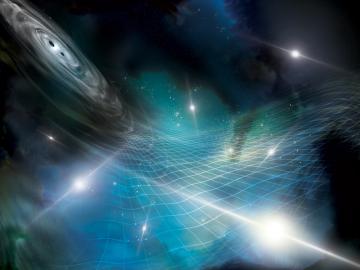Goodness, Gracious: Great Balls of Fire
September 4, 2013
Amanda Nagy
Positioned on top of Mudd Library, a tiny camera captures unobstructed views of the night sky. In the horizon appears Peters Hall, with its green patina dome and tower spire, and if you happen to be stargazing, brilliant fireballs—fragments of meteors brighter than the planet Venus—burning up in the atmosphere.
The camera is a recent installment of NASA’s All-Sky Fireball Network, a system that monitors and collects data on the meteoroid environment surrounding Earth. The purpose is to understand the flux and risk of meteoroids affecting spacecraft and satellites traveling in and beyond Earth’s orbit.
Oberlin College has access to the data, and it’s possible that students could use it as a resource in astronomy-related coursework in the future, says Yumi Ijiri, professor of physics and astronomy.
According to the NASA Meteoroid Environment Office, meteoroids have never been definitively proven to have destroyed a spacecraft, although there have been several in-flight anomalies attributed to meteoroids. Understanding the meteoroid environment can help designers protect spacecraft and satellites during periods of higher flux, such as meteor showers.
Once the sky turns dark, the camera is constantly streaming. As bright as they are, fireballs are only about the size of a pebble, though they can travel at speeds of 25,000 miles per hour. They can be seen by the naked eye. “On a good night, we’ll record three or four events, says Dave Lengyel, Oberlin’s planetarium and observatory coordinator. “The bigger the stuff, the bigger the flash in the sky.”
Oberlin is part of a growing network, which currently consists of about a dozen in locations across the country. In the Great Lakes region, cameras have been installed at Hiram College and at two observatories in western Pennsylvania. Lengyel said Oberlin was approached by NASA, and the application process took about a year to complete.
The cameras have overlapping fields of view, which means that the same fireball can be detected by more than one camera. By knowing the exact position of each camera in a region, NASA scientists can detect the height, speed, and even the orbit of the meteoroid responsible for creating the fireball, which provides clues about whether it came from a comet or an asteroid.
“I just think it’s really neat that Oberlin can participate in science that is helping NASA,” Lengyel says.
Tags:
You may also like…
Oberlin Researchers Part of Breakthrough Study on Gravitational Waves
June 29, 2023
Fins to the Left (and Right)
May 25, 2023
Keith Tarvin Earns Excellence in Teaching Award
May 18, 2023


